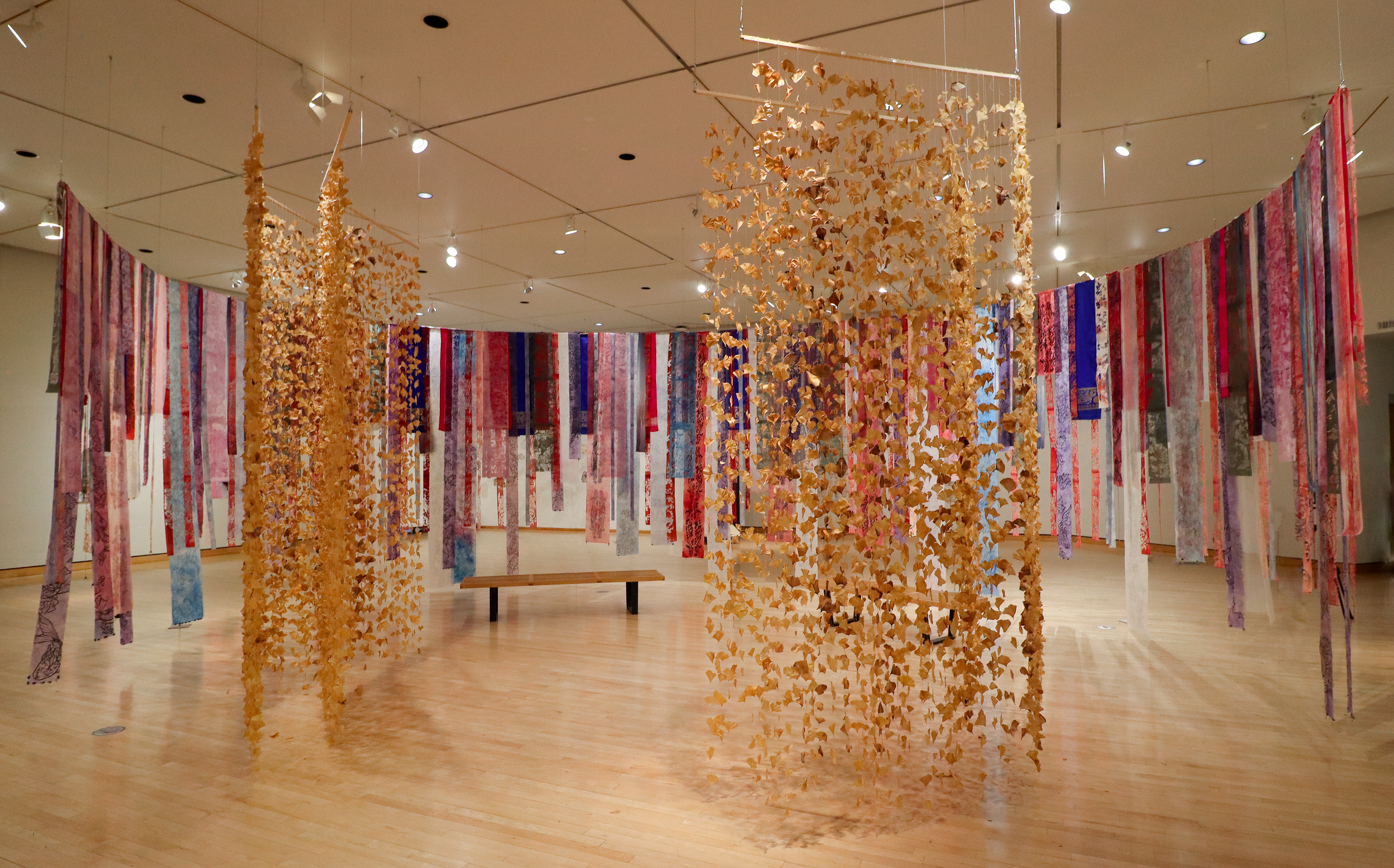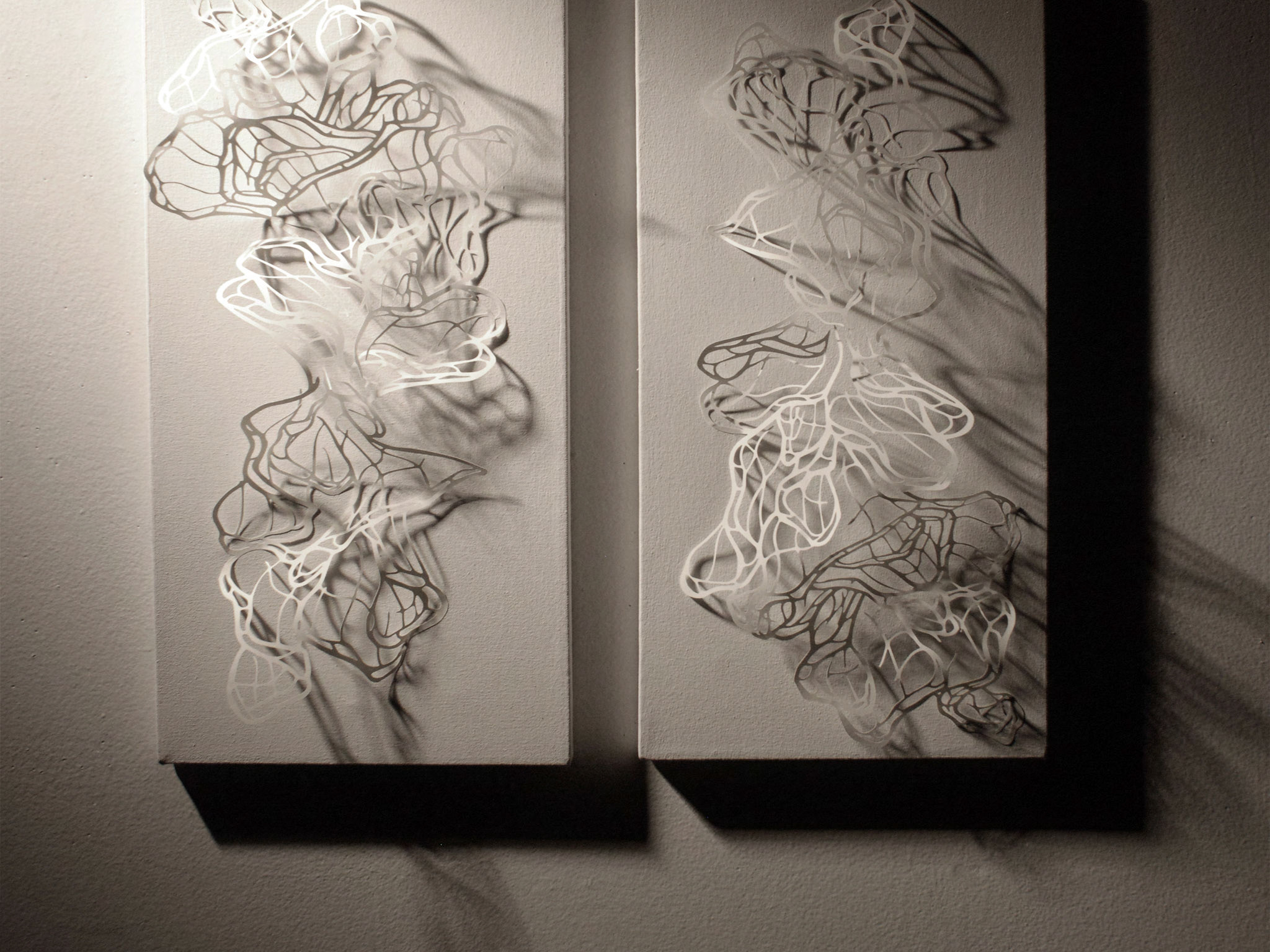Ginkgo biloba leaves serve as a metaphor for remembrance. Dating to 200 million years old and a native species of Asia, this tree has withstood the test of time. As I collected and hand-dipped each one in encaustic wax, I thought about how traditions and customs have also carried on to each generation. Gingko leaves serve to function much like memory. These leaves are a way for me to honor my elderly grandmother, who is suffering from dementia. When I show her my artwork, she can recognize these unique leaves as she grew up with ginkgo trees in Korea. Similar to how her memory has been slowly failing her over these past two years, my artwork called Beautiful Decay: Raining With Gold is a way to celebrate her strength. As leaves are dipped into the wax to help preserve their beauty, internal decay is inevitable as they become frail. As the leaves detach off the strings of memory, these ginkgo leaves remind me how every generation has cultural information that becomes lost or entangled into a new meaning.























